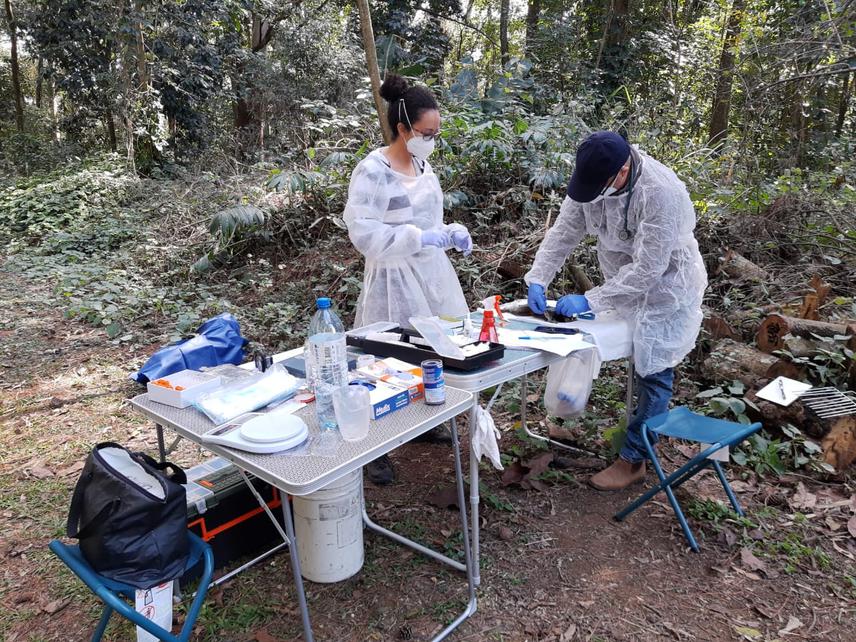Camila Vieira Molina
Epidemiological data from wild New World Primates (NWP) are scarce and this basic data is essential for NWP conservation plans. The proximity between NWP in large urban centers, as São Paulo city (SP), is relevant for infectious disease transmission between primate species, primates and humans and vice-versa. The present study aims to survey viruses (coronavirus, influenza, paramyxovirus and bocavirus) in wild NWP from SP and bordering municipalities. Having this basic epidemiological data will help us for future planning of actions for conservation of local threatened NWP (Alouatta guariba and Callithrix aurita); and for a controlling strategy for exotic NWP (Callithix and Sapajus) in SP.

São Paulo state is the originally home range of ten NWP species, from those the species that still inhabit protected areas around São Paulo city is the Alouatta guariba clamitans, Callithrix aurita, Sapajus nigritus and Callicebus nigrifrons; all have some threatened degree. In the meantime, three exotic species are seen in metropolitan area of São Paulo: Callithrix jacchus, Callithrix penicillata and Sapajus apella, all with Least Concern status. The exotic Callithrix are also considered invasive. They are used to live in proximity to humans, in their gardens, urban parks, or even in small squares. They are sighted not only in protected areas and its borders but also inside São Paulo city. The Sapajus populations are more restricted to parks surrounding São Paulo city, but also live in close contact with humans that feed the animals. The One Health concept is that human, animal and ecosystem health are all interconnected and interdependent. Thus, when one is modified, the others will be impacted. Anthropogenic impacts on environment affect disease ecology, modifying and potentially increasing pathogens transmission or even spillovers events.
São Paulo metropolitan area is surrounded by Atlantic Forest Parks. Increasingly contact between NWP that reaches parks borders and even people living inside parks areas. The borderer animals could contact NWP from intact areas too. Also, exotic invasive NWP that adapted living inside the city and few personal reports of endangered C. aurita living in borders and being fed by humans. The high contact between humans and NWP could lead to parasite transmission, spillovers or outbreaks that would affect human population from the biggest metropolitan area of South America, or endangered species of NWP.
For these reasons the main objectives are:
• Investigate epidemiological and etiological aspects of Influenza A virus, Paramixoviridae family, coronavirus and bocavirus in New World primates from the metropolitan area of São Paulo city.
• Contribute to the NWP sanitary status from the metropolitan area of São Paulo city.
• III. Understand if NWP may harbor already known or possibly new viruses.
• IV. Data from this surveillance study will contribute for future studies to prevent disease transmission between studied populations.